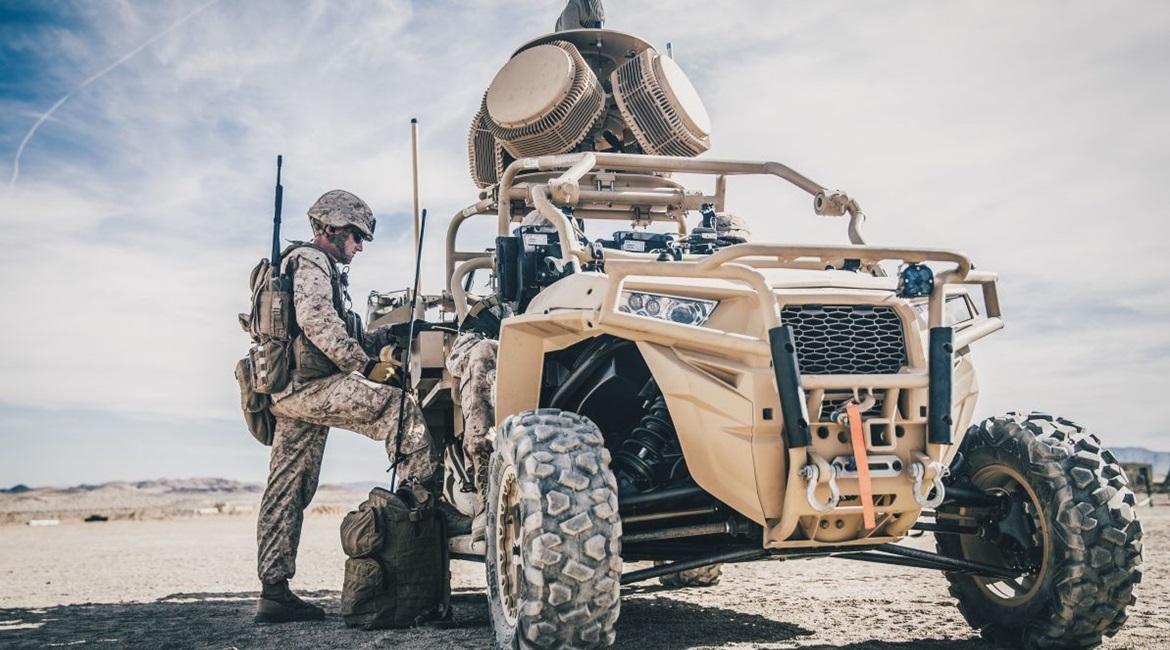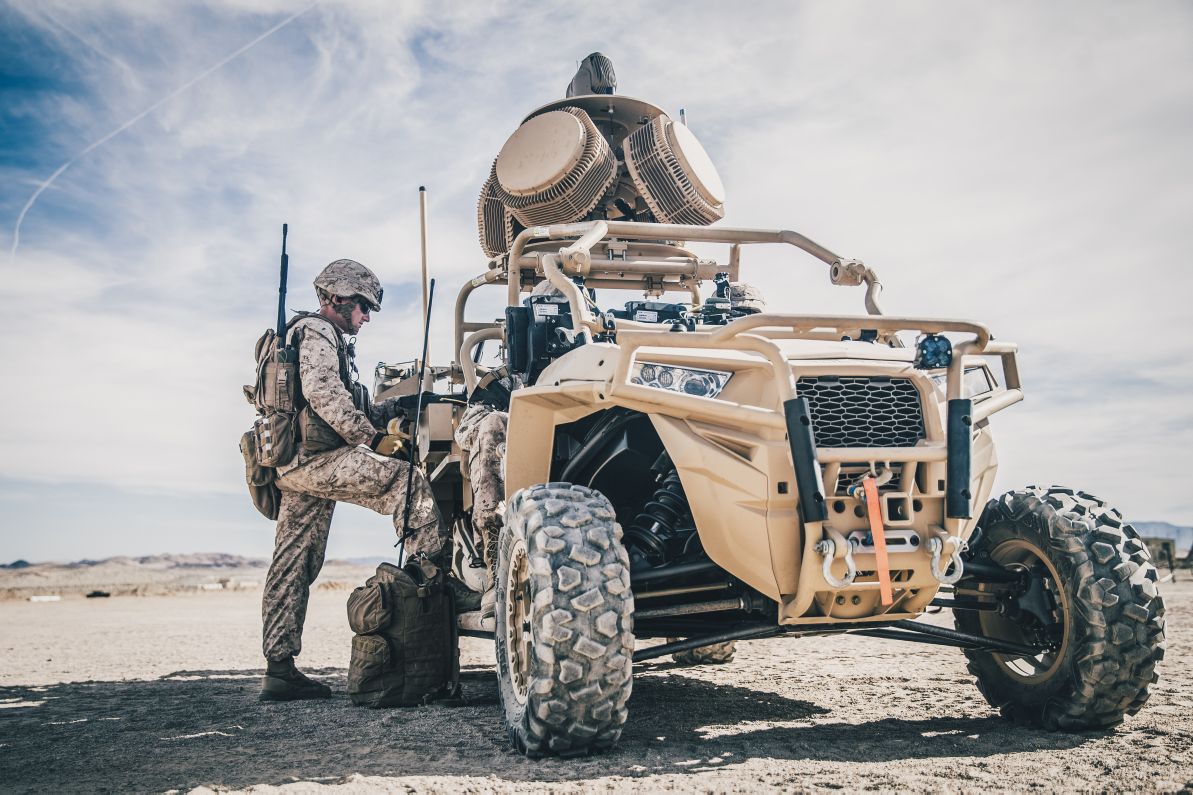
By the start of October, the US Marine Corps (USMC) will stop fielding new Light Marine Air Defense Integrated Systems (LMADISs) designed to jam drones but will continue to maintain the ones in its inventory and glean lessons learned for a future system.
Captain Forrest Williams, a counter-unmanned aircraft system (C-UAS) project officer with PEO Land Systems, spoke with reporters on 6 May about how marines are using LMADIS within the US Central Command area of responsibility, system fielding plans, and how the service plans to filter insight from the effort into its MADIS effort on Joint Light Tactical Vehicles (JLTVs).

1st Lieutenant Taylor Barefoot programmes a counter-UAS on a LMADIS during a pre-deployment training exercise at Marine Corps Air Ground Combat Center Twentynine Palms in November 2018. By the end of fiscal year 2019, the service will stop fielding new LMADIS systems. (US Marine Corps)
An urgent needs statement for a C-UAS “gap filler” spawned the creation of LMADIS, Capt Williams explained. What resulted was the decision to outfit some Polaris MRZR all-terrain vehicles with an Ascent Vision CM202 multi-sensor optical ball, RADA RPS-42 radar, a tablet, and Sierra Nevada Corporation’s dismounted electronic countermeasure system (Modi). The optical ball and radar are then used to detect class I and II UASs. The information is then fed into the tablet where marines slew the camera to determine if it is a friendly or enemy drone. If it is the latter, they use the electronic warfare jammer to break the connection between the pilot and the aircraft.
Right now, it is up to commanders to determine how to employ LMADIS, be it for protecting moving convoys or using it at the forward operating base.
Looking to read the full article?
Gain unlimited access to Janes news and more...